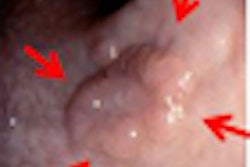The recent series of articles in the New York Times on errors in radiation therapy has experts searching for better ways to prevent adverse events. Researchers from Italy may have found one solution by replacing the conventional "reactive" methods for risk management and quality assurance with a more proactive approach.
Researchers at Istituto Clinico Humanitas in Rozzano, a suburb of Milan, Italy, embarked upon a method of proactive risk analysis called failure mode effects and criticality analysis. The method is already used in operations management in a wide range of industries to define potential points of failure in a system, and to define the effects of such failures.
Their work was described in an article published online in Radiotherapy & Oncology (December 29, 2009).
The analysis process
A primary advantage of a proactive technique like failure mode effects and criticality analysis is that it facilitates the identification and evaluation of ways in which a process may fail. This differs from a retrospective evaluation of the cause of an adverse event.
The Istituto Clinico Humanitas' radiotherapy and radiosurgery department began looking at applying failure mode effects and criticality analysis by creating a working group that included radiation oncologists, medical physicists, radiation therapists, a nurse, and clerical staff. Each individual described in detail the steps of each radiation therapy process for which they were responsible. Each process was validated as it was being performed to identify any step that was left out, as well as any processes that had not been previously documented.
In addition to the department team, the working group included a hospital engineer experienced in clinical risk management but who was not directly involved in the workings of the department. The engineer served as a facilitator who was able to identify elements of each process that were taken for granted or underevaluated as part of the department routine, according to lead author Dr. Marta Scorsetti.
Once the processes were defined, the facilitator asked each member of the working group to identify any step in a process in which they actively participated where an error might occur. Each participant was then asked to identify the potential causes of each error, associating them with a selection of categories, such as a human error or lack of training. They also were asked to identify every process control currently implemented to detect an error before it occurred or before it could cause damage to the patient. Finally, they were asked to estimate the possibility of the error occurring.
Potential events that could contribute to an adverse event, or failure mode, were categorized by developing an index of severity, also known as criticality. To do this, the estimated frequency of occurrence of the failure mode for each possible event (O) was multiplied by the expected severity of the damage to the patient (S) and the detectability of the failure mode (D).
Criticality Index = O x S x D
A ranking scale with a numeric value (1 to 5) was developed for the following categories:
- Estimated frequency of occurrence: frequent, probable (will occur one or more times within a two-year period), occasional (may happen once in two- to five-year time span), remote (may happen once in a five- to 10-year span)
- Severity of damage to patient: very serious, serious, medium, minor, none
- Detectability: high, medium, low, remote
Risk analysis was conducted and a numeric risk matrix was created for categories of acceptable, low, medium, and high risk. This prioritization of potential failures enabled the department to not only identify quality assurance deficiencies but also to identify what changes were needed the most.
Potential sources of failure
The following are processes that received the highest criticality index score (from 18 to 48 out of a range of 1 to 80), listed in descending order:
- Error in patient identification
- Prescribing an inadequate support therapy
- Inadequacy or incompleteness of the first medical exam
- Error in the portal vision verification at the beginning of the treatment
- Error in patient positioning during treatment
- Error in communicating coordinates of markers position on the patient to the radiation therapist
- Error in dose entry during treatment planning
- Missing transcription of the new isocenter after the previous isocenter is changed during treatment planning
- Administration of contrast medium for CT simulation without checking blood tests
- Creating treatment plans that have the same name as a prior treatment plan
Points of failure
The researchers cited a number of examples that could contribute to unexpected failures in the quality assurance process.
For example, during the investigation, the working group discovered that while a photo of each patient was added to the patient's medical record, the photos often were not representative of the patient's appearance at the time of treatment. Because of this, the radiation therapists did not rely on the photos.
Patients in a therapy waiting area also had the tendency to enter the treatment room if the individual whose name was called by a radiation therapist did not respond, presumably unaware that they might receive inappropriate treatment. A new patient identification protocol was developed and implemented as a result of these discoveries, with direct input and recommendations by the department's radiation therapist.
The group also identified a lack of important data in reports of patients' initial medical exams. Because lack of information could lead to inappropriate diagnostic or therapeutic decisions, the radiation therapy department switched to an electronic form that contained mandatory fields. Another important protocol change included having two additional medical physicists review a proposed treatment plan created by one medical physicist.
According to Scorsetti and colleagues, the end results for the department were threefold: Awareness of quality control and the need to constantly monitor it increased among all clinical and clerical staff. In addition, the facility made improvements in technical procedures, quality checks, and flow of communication, and the number of adverse incidents registered with the hospital showed an "important decrease" in terms of severity.
The authors recommended that a coordinated research effort to promote a more systematic and comprehensive integration between incident reporting systems and risk analysis techniques and tools be implemented by radiation oncology departments.
By Cynthia E. Keen
AuntMinnie.com staff writer
February 8, 2010
Related Reading
Second NY Times article highlights radiation therapy errors, January 29, 2010
NY Times article details radiation therapy errors, January 26, 2010
WHO: Data errors cause most rad therapy mistakes, July 22, 2009
Options abound for radiation therapy QC, August 19, 2008
QA tool cuts errors in radiation oncology department, August 6, 2008
Copyright © 2010 AuntMinnie.com



















